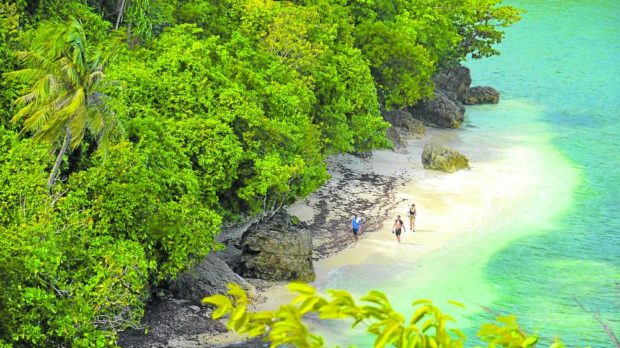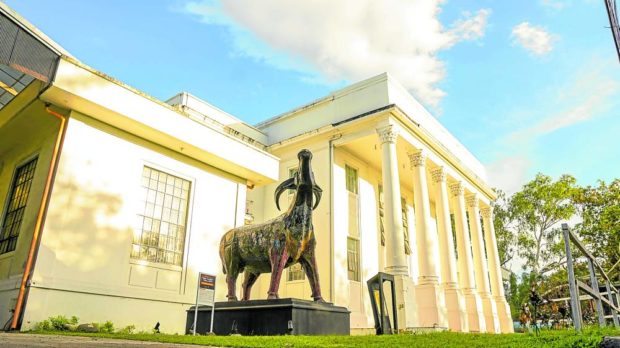Bacolod City—the capital of the country’s sugar bowl province Negros Occidental—is known as the City of Smiles and is home of the colorful MassKara Festival. You will surely find reasons to smile when you are in Bacolod and even more reasons to stay in the sweetest spot in the Philippines.
The Food
You might have already tasted or heard of the juicy Chicken Inasal or the one-of-a-kind, fall-off-the-bones beef broth called Kansi from Bacolod. Both are all-time favorites of locals and tourists alike. Beyond these, however, are more culinary delights from the city’s homegrown restos.
21 Restaurant and Bob’s are old-timers who share their family’s heirloom recipes. You can also have your fresh seafood cooked the way you want in dampa-style eateries like Gina’s, Diotay’s, or Pala-Pala restos.
In between meals, you can have your postre or sweet treats from wherever you find yourself in Negros—may it be cakes from Calea and Felicia’s; bread and pastries from Virgie’s and Café Bob’s; the softest of rice cakes or Puto Manapla and Napoleones from Roli’s.
Get your pasalubong of old-school piaya from Bailon, and the packed goodies from Virgie’s and Sugarlandia. You can even buy from the manuglibods, or sellers who go around on foot in Silay, native delicacies like fresh lumpia, bayi-bayi, inday-inday and empanada.
One can never go hungry in Negros.
The artscape
Bacolod is a buzzing hub for different art forms—painting, sculpture, literature, theatre, film, music and architecture. The film and theater communities actively produce short films and long-act plays for the public. Art District, aptly called so, is the playground for painters, sculptors, musicians, filmmakers and actors. The city also has several independent galleries like Artfull Gallery, Gallery G and Martinez Arthaus, featuring budding and seasoned artists.
History and culture
The sugar industry has been the island’s constant since the 1800s and has become a fundamental part of its history and culture. This is evident in the exquisite Neo-Classical architectural design of the Provincial Capitol, built in 1935, whose stately structure is mirrored on the lagoon fronting it. The works of sculptor Guillermo Tolentino (National Artist for Sculpture) adorn the building and the open spaces in the Capitol Lagoon. To know more about the history, arts and culture, visit the Negros Museum near it.
The Festivals
MassKara Festival is celebrated from the first of October until its third week. This festival culminates with a grand street dance and arena competition of colorful masks and intricately-designed costumes dancing to the fast-paced mix of the official MassKara theme song and traditional Hiligaynon songs.
MassKara is unique from other Philippine festivals because it is not rooted in religion. It started with the Art Association of Bacolod-Negros artists, who made masks of all kinds to help barangays and out-of-school youth. Artist Ely Santiago gave the name MassKara from Spanish words: “mass” meaning a multitude of people and “cara” for face—thus MassKara, as in a multitude of faces.
The people’s festival that is MassKara was born out of the resilience of the Bacolenos from the sugar crisis and the tragic sinking of the MV Don Juan in the 1980s. The MassKara Festival 2022 was appropriately themed “Balik Yuhum” or to smile again, signaling the comeback of this festival and the city’s vibrant economic progress.
Panaad, which means vow, is the name given to the mother of all festivals in Negros. It is a promise to come together every April and celebrate the bountiful produce. The province has 19 municipalities and 13 cities, each with its own festival showcasing its products, ways, or history. During the Panaad Festival, one can tour the whole of the province by visiting the replicas of old houses, miniature town halls, an original steam engine used decades ago by sugar mills, and structures representing its town. Panaad Park can be considered the province’s showroom for its products and tourist destinations.
Beaches and islands
White sand beaches and majestic coves are easy to find in the city of Sipalay, about three to four hours south of Bacolod. Sipalay’s coastline and islets are part of the Sulu Sea, and the sunsets are breathtaking while underwater scenes are spectacular. Numerous diving sites and WW II shipwrecks are waiting for you to discover and explore.
Danjugan Island is a 43-ha marine sanctuary that has five lagoons, ever-changing white sand beaches, bat caves, lush limestone and mangrove forests surrounded by healthy seagrass beds and coral reefs rich in biodiversity. Whether you decide on spending your day at the Moray Lagoon or an overnight stay at Typhoon Beach, you will be one of the nature lovers who will contribute to conserving Danjugan and supporting its surrounding community. If you stay overnight in this paradise, wait for the sparkling show of the bioluminescent phytoplanktons on the shoreline and the thousands of dancing fireflies.
The Highlands
Don Salvador Benedicto and Silay City’s Patag have already grown to be the quick escapes of the lowlanders. With their crisp, pristine mountain air and spectacular views of waterfalls and ranges, these destinations offer a refreshing break from the busy city. DSB and Patag are just 45 minutes away from Bacolod.
Design
The Bacolenos really know how to speak their design language. The Association of Negros Producers (ANP) is a sweet success story of how people from this side of the Philippines, through their resilience, emerged from the 1980s sugar industry problem that displaced thousands of farm workers. The ANP runs The Negros Showroom in Bacolod, which is the all-year retail platform for all members. ANP also hosts The Negros Trade Fair, the country’s longest-running provincial trade fair, every September to sell Negros-made products and bring the Negrense flavor to Manila.
The Night Life
Bacolod is in the province, but the nights are packed with drinks overflowing. The rumor is true that the MassKara is not the only time they celebrate, as every night is a possible party. It is common to find regular restaurants seamlessly turning to cool bars and watering holes at the drop of twilight. You might discover Quedan and Portiko to your liking for good music, awesome bar chows and great party crowds.
The People
As they say, the people of Bacolod and Ilonggos have the most “malambing” or charming of all accents. That is not far from the truth, even when angry.
But what is more, the Bacolenos and Negrenses grew up living with high standards. Whether it be for food, service, products, art, design, or other aspects, they expect more than the ordinary and strive to do more to achieve more. Along with the famous Bacolenos and Negrenses, such as Direk Peque Gallaga and Erik Matti for film, Ar. Leandro “Lindy” Locsin, Doreen Gamboa-Fernandez, actor Joel Torre, and visual artists Charlie Co and Nune Alvarado, Negrenses and Bacolenos are pioneers and world-class in everything they do.
The author is a visual artist, president of Art Association of Bacolod-Negros, and managing and creative director of Artful Philippines. She also has a travel and art blog, The Fat Goddess



